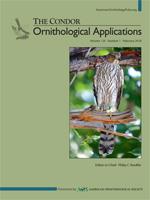Changes in climate, vegetation, and land use are recognized as important drivers of changes in the distribution and abundance of wildlife. However, the behavioral and demographic mechanisms through which these changes affect populations have received less attention. Identifying these mechanisms is an important component of predicting the impacts of increasing environmental change. We used 30 yr of nest monitoring data at a study site where White-crowned Sparrow (Zonotrichia leucophrys) breeding density declined 85% to evaluate factors influencing habitat selection and reproductive success. Rapid secondary plant succession occurred at our study site, but the rate of change was faster in some areas than others. White-crowned Sparrows exhibited strong patterns of nest site selection, preferring open shrub vegetation and avoiding forest. As a result, many parts of the study area that were used for nesting early in the study period were no longer occupied by the end of the study period. Over the course of the study, both the weather conditions and the vegetation structure and composition around nests varied. Across the range of occupied habitat, we found no effect of vegetation structure on reproductive success. We also found no support for effects of temperature and rainfall on nest survival, and only weak and inconsistent effects of temperature on clutch size and the number of fledglings per nest. These results indicate that vegetation change drove changes in the nest sites used through habitat selection, and that habitat selection appeared to ameliorate any potential negative effects of vegetation change on per capita reproductive success. Hence, the population's response to rapid vegetation change was driven, at least in part, by site selection, rather than by a decline in reproductive success. In light of increasing environmental variation, it will be important to partition the effects of environmental change on habitat use and reproductive success to predict population viability and extinction risk.
How to translate text using browser tools
24 January 2018
There goes the neighborhood: White-crowned Sparrow nest site selection and reproductive success as local density declines
Elizabeth L. Porzig,
Nathaniel E. Seavy,
John M. Eadie,
Thomas Gardali,
Diana L. Humple,
Geoffrey R. Geupel

The Condor
Vol. 120 • No. 1
February 2018
Vol. 120 • No. 1
February 2018
demography
environmental change
habitat selection
reproductive success
vegetation succession
White-crowned Sparrow
Zonotrichia leucophrys





